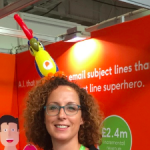This week we talk integrated campaigns and content marketing for Start-ups
As a start-up, we know you’re trying to learn and juggle about 3 million news tasks. You’re suddenly in charge of a business and there’s a whole raft of things you need to know; VAT, tax returns, Companies House, bank accounts, funding, HR, IT, accounts payable, the list goes on and on. Thinking about marketing campaigns and content marketing is often the last thing on your agenda. But take heart, the leap from a brilliant idea to turning it into an actual proper grown-up business can be huge and daunting. We know, we’ve done it. But you’ve done the hardest part.
One area that often gets a bit left behind, becomes a bit of an afterthought, can be your marketing strategy. If you think about it, you know it’s important and you know it needs time and possibly some money dedicated to it, but before you even get there, there’s another set of skills and a never-ending list of buzzwords to wrap your brain around.
Now, a post to help explain all the marketing terms and technologies would be longer than that last hour at work on a Friday afternoon, but recently we’ve been asked by quite a few of our business buddies about Integrated Campaigns and Content Marketing, particularly based around a digital interaction, so thought that was as good a place to start as any.
So what do these terms mean and aren’t campaigns and content marketing strategies polar opposites? Integrated campaigns, or integrated marketing, is the process of communicating a consistent message across all available customer touch points. If it’s done well the narrative runs through each channel but is adapted for the particular nuance of the individual channel and customer need at that point. Content marketing is the strategic approach to creating and distributing valuable content that meets consumer needs to attract and retain a target audience. Sounds so simple, right?
Well you’ve probably noticed that there’s two methodologies at play here, campaigns tend to follow a prescribed cycle and have start and end points, digital allows optimisation through the process. Content marketing is an always-on approach that builds over time and can be continually optimised. Fear not though you don’t have to choose one or the other done together they can be mutually beneficial.
DVO is on hand to give you lots of simple and, more importantly, useful tips on how you can make this work and why you should be doing it.
First let’s take a step back, why content marketing, why integrated campaigns, why both?
Well, as with so many things nowadays, we have technology to thank for all this. Two things have happened which have had a huge impact on how companies interact with their audience. One, control has been put in the hands of the consumer, thanks to technology and two, technology has created a huge amount of choice. The first behaviour has placed huge emphasis on brands meeting consumer needs in a better way. The second has created consumers who flip between channels at break neck speed. Couple these to some of the inherent cornerstones of marketing, such as consistent and coherent, and you begin to realise that to truly influence consumers, your messaging needs to be delivered across multiple channels in a properly cohesive way.
Content marketing has become a vital means of customer communication. Gone are the days when trash copy filled pages and pages of the Internet, never to be read, in the hope to generate traffic, inbound links or just through shear laziness. Brands and agencies alike are waking up to the fact that truly engaging content, aimed at meeting the needs of consumers, that is rich, relevant and interesting, has a huge amount of value. This content must capture your audience’s imagination in a very short space of time. Consumers are not daft; they can smell weakness at a 100 paces. Fail to give them what they want and they will be off quicker than the Finance Director when it’s their round at the bar.
Campaigns can be tricky, particularly in the digital space. You can’t run a campaign indefinitely, think of the money! But you also need to publish content regularly, particularly social content. So how do you make the two marry up?
Once you start to think about it though, you can fuse the two together. You can use content marketing to test elements of your campaign and you can use campaigns to build stepped increases in your audience, which in turn will then be exposed to your content marketing. Lost you a bit? Let’s break it down, here’s how we approach it.
Research
We look at 4 key area; Brand, Consumer, Landscape and Competitors. We using a mixture of qualitative and quantitative research and we scrutinise all available relevant data sources. This means customer data, website usage (via Google analytics or similar), social tools (we favour brandwatch) and any other data sources we think relevant. If we don’t have something we’ll do a survey or similar to find something out.
Why? Because we want to uncover the not so obvious insight that will give our client the competitive edge.
A word of warning here, the best creative taps into an emotional or behavioural insight, sometimes data doesn’t always tell you this. It’s important to keep an open mind with research and try and get to the bottom of what is happening in the context of your project.
Persona development
We develop personas which are a picture of our target market.
Why? It allows us to refine who we are talking to, getting to the heart of their needs, passions and goals. Really building up a picture of the audience and understanding what they need from the brand we’re working with.
We don’t delineate between campaigns and content marketing. Whilst the activation may be different, insights and data inform our work regardless of how it is executed. Very often it’s a combination of both.
Warning, don’t take “need” too literally, people have more than just functional needs. Think about emotions, the best marketing always taps into them. Don’t believe us, think about why people will still buy the iPhone 7.
Campaign/editorial planning (The strategy)
How is our campaign or content going to play out, where when? Whether it’s an integrated campaign or content marketing or both, you need to have a clear plan of what is going to happen, where and when.
This is then rigorously sense checked against the objectives. It’s important to always ask why we are doing something.
Note. I read it in a blog is not a good why!
Measurement
Once you know what you are doing and you’ve sense checked it thoroughly you can start to think about measuring individual elements and assigning KPI’s. You should already have a clear idea of how to measure the overall success as it’s probably related to a business objective, sales or market share or maybe a brand objective such as awareness.
Creative
We go through a briefing process where our planners run a workshop with our creative, editorial and technical staff. Ideas are often the intersection of these three disciplines. Essentially we are setting them a challenge based on a framework our planners have created. The creatives’ job is to tap into the insights and communicate in a novel, engaging way that works to make the activity successful. Good creative is always the result of good planning.
If you don’t have the time to go through this in a granular way we suggest you use your research to sense check your creative, does it tap into one of your insights? Failing that go back to the roots of your brand and use that to sense check.
Production
Art production, copy, editorial, development. Basically getting on with bringing it to life. We will have defined elements that we can quickly prototype and test, whether it’s content or a technical element. We want to gauge reaction from live users and digital gives us the perfect environment to do this, think testing out something through a blog post or a piece of functionality. What we don’t tend to do is just throw stuff out and see what sticks, it’s highly inefficient and can be brand damaging. We call it an agile waterfall methodology.
Activation
We’ve got our assets, we’ve got our plan, let’s get it out there. Time for a bit of media. Well for us activation is still about test, learn refine. Digital gives us this benefit as it’s easy to make small changes, it’s a bit trickier with offline elements so we tend to go digital first before committing to a print run, TV ad or some other major cost.
Tips
What we’ve outlined above is probably going to be stretch for a start-up who isn’t highly experienced so we’ve pulled out some pointers you should consider:
- Do some research, you’ll find insights once you get beneath the surface. Speak to you users get feedback ask questions. Don’t be afraid of negative answers.
- Set clear goals for your activity. Start at the top and work down, if it’s more sales you should be able to relate KPI’s in your activity back up to this.
- Set specific KPI’s for individual elements, make sure they are relevant to your goals and make sure you can measure everything you need to.
- Prototype your campaign ideas alongside your content.
- Start small, to ensure you use budgets for paid amplification wisely.
- Use campaigns to fuel big jumps in your incremental audience growth.
- Record your social interaction and user stories, these are great fuel for your campaigns.
- Don’t beat yourself up if it seems daunting, start small with a few priority channels.
Ultimately you’re aiming for an omni-channel approach. Why? Because consumers just see your brand they don’t see channels. Consistently great experiences, regardless of where or when someone interacts with you, are the ultimate goal.
We’re here to help, if you would like advice on both of our key areas of expertise, Integrated Campaigns and Content Marketing, then give us a call or use our contact page.







